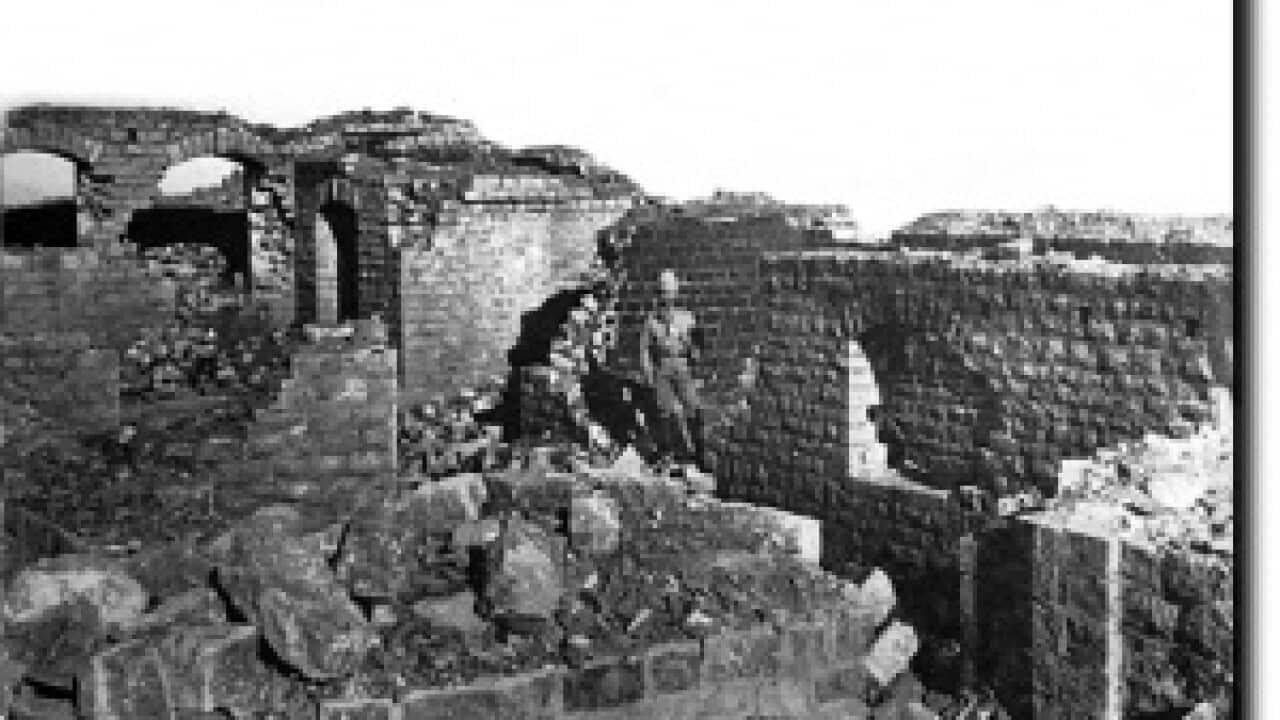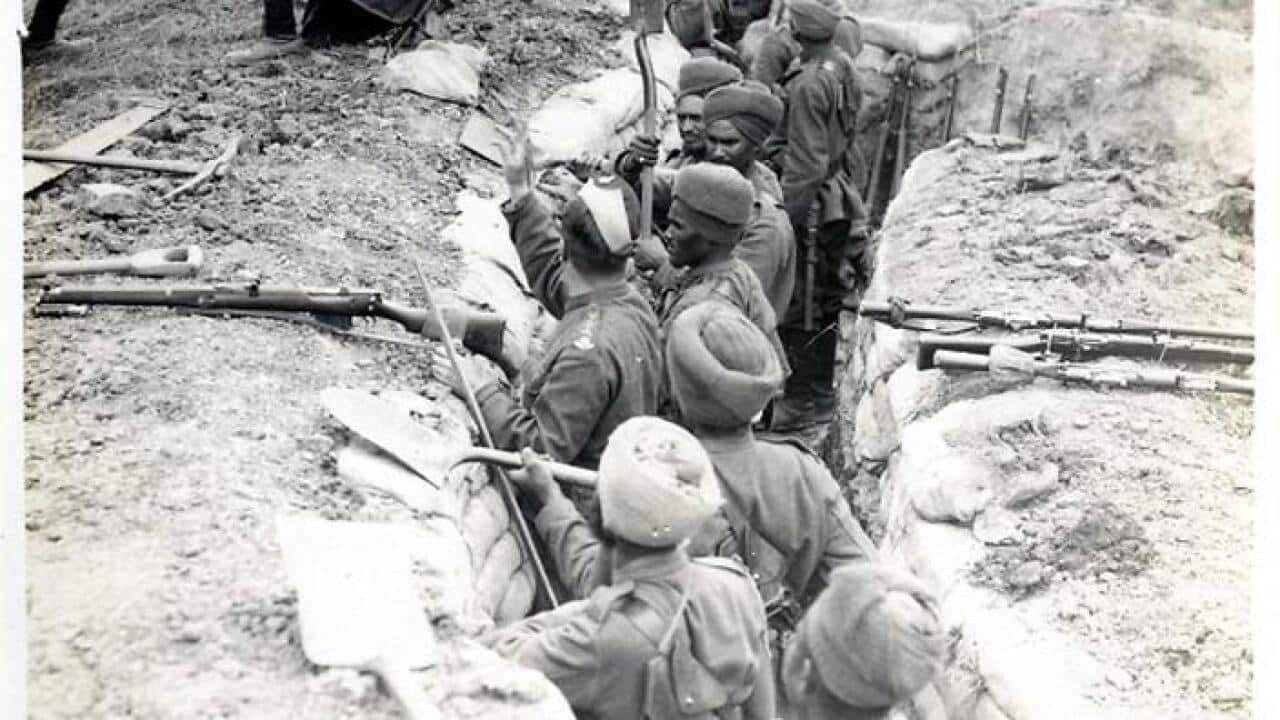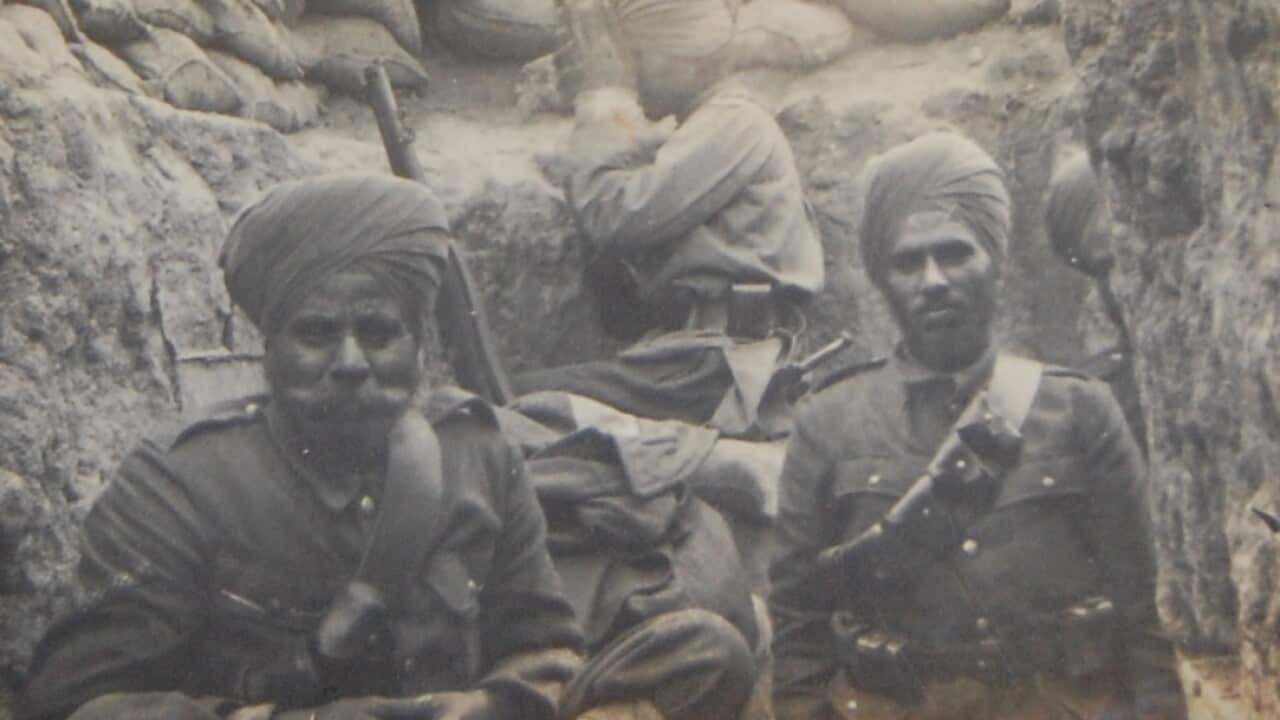The West Midlands police in the UK is hunting for the vandal who blighted the ‘Lions of the Great War’ memorial statue in Smethwick with graffiti, just a week after the statue was unveiled.
The 10 ft-high bronze statue which depicts a Sikh soldier in a uniform and a rifle was unveiled on November 4th has been sprayed with the words “Sepoys no more”. Sepoy was a term used to refer to Indian soldiers serving in the British or European armies.
A thick solid line has also been daubed through the words “Great War” and replaced with “1 jarnoil” during the act of defacement. Speculations are rife on social media that the word “jarnoil” actually refers to Jarnail Singh Bhindranwale, a Sikh separatist leader of the 1980s.
The one of its kind memorial was commissioned by the Smethwick Guru Nanak Gurudwara to commemorate the contribution of all Indian soldiers who served in the British Army during the two World Wars ahead of the centenary of the Armistice.
"Working with the council we won't allow this vandalism to undermine the very strong message created by this new monument and the overwhelmingly positive reaction to its unveiling," Jatinder Singh, President of the Guru Nanak Gurudwara told the .
Enraged over the incident, Sikhs across the world have called for a strict action against the incident.
Meanwhile, the graffiti has now been removed by the West Midlands police who said they are treating the incident as “racially aggravated criminal damage.”
Sgt Bill Gill, from the Smethwick Neighbourhood Team, said: “We understand that this attack has caused a lot of concern in the community, and we are working to understand the reasons behind it and identify whoever is responsible.”
It is said that more than 83,000 turbaned Sikh soldiers sacrificed their lives and more than 1,00,000 were injured during the two world wars.
Sikh warriors at that time fought in Europe, Africa, and the Middle East, and made insurmountable contributions on the Western Front and at Gallipoli, alongside their British, Indian and Commonwealth counterparts. Historical evidence indicates that the turbaned cavalrymen were regarded as fearsome warriors whose loyalty and fighting tenacity was highly regarded within the British Army so much so that they won 10 of the 22 Military Crosses for showcasing bravery in the battlefield.
Historical evidence indicates that the turbaned cavalrymen were regarded as fearsome warriors whose loyalty and fighting tenacity was highly regarded within the British Army so much so that they won 10 of the 22 Military Crosses for showcasing bravery in the battlefield.

An Indian soldier serving with the British Army is stretchered to hospital during World War I, circa 1916. Source: FPG/Hulton Archive/Getty Images





